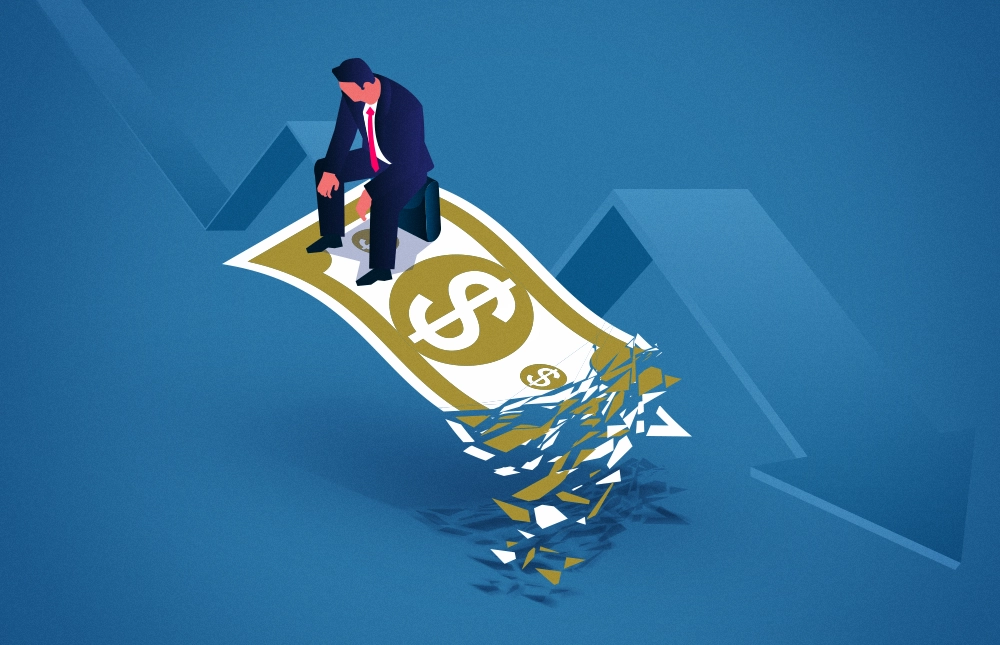The word stagflation has been all over the news lately, but it can be hard to find a concrete definition. That’s because the term is young, only coming into popular use in the 1970s, and it’s such a rare occurrence that economists worldwide are still debating what it actually means.
While it’s difficult to nail down a precise and detailed explanation, most economists agree that, on a basic level, stagflation is the combination of rising inflation, unemployment, and stagnant demand in the market. In reality, it’s way more complex than that. Since it’s = only happened once before, it’s not a phenomenon we have a lot of historical data about.
As a business owner already managing the chatter of a looming recession in the coming year, it’s unnerving to know that stagflation may catch you by surprise (and here is your official warning so it doesn’t). We’re going to help prepare you for the uncertainties ahead by providing a better understanding of this economic phenomenon and sharing how it is likely to impact businesses with some insight into how you can protect your own.
What is Stagflation?
Although they are both difficult economic periods, recession and stagflation are not the same. A recession is a normal part of the economic cycle, defined as two consecutive quarters of decline in economic activity and a fall in GDP.
Stagflation, on the other hand, is an economic concept that was identified and named in the 1970s. Previous to the ‘70s, as Investopedia explains, the common understanding of economic cycles included a stable inverse relationship between inflation and unemployment. The ’70s threw a spanner in the works with slow economic growth, high inflation, high debt loads, oil embargoes, and the apparent inability of the Federal Reserve to control prices. Add in several recession periods, and you’ve got an economic situation that is incredibly difficult to manage and can feed on itself in a vicious cycle.
During this period of time, stagflation was caused by inflation, high unemployment, growing federal debt due in part to the Vietnam War, and the collapse of the Bretton Woods agreement. It was capped on either end with oil embargos, first the OPEC embargo in 1973, and then the Iranian embargo starting in 1979.
The stagflation of the ’70s lasted for an entire decade, and there were two recessions within it. And the only way out of it was high-interest rates that caused several countries a financial crisis.
What Factors are Contributing to Stagflation Now?
Current events and economic conditions, similar to what happened in the ’70s, are currently creating signals for the possibility of stagflation. The supply chain difficulties that came to a head during the pandemic still haven’t been resolved, rising inflation and interest rates, the war in Ukraine, and growing unemployment are all contributing to instability. According to Forbes, several prominent economists have warned about the possibility of stagflation since early in the year.
In July 2022, the Financial Post expressed that while the potential for stagflation existed, we weren’t quite there yet. And while Forbes has warned about the possibility, they also have consensus from several financial experts that we haven’t started into stagflation yet because, per the 1970’s definition, we’d already be there. Still, as Brad McMillan pointed out, the economy is fundamentally different now than in the 70s, and there are many more factors to consider. Whether we arrive at official stagflation, recession, or both happening at once, it’s undeniably a challenging time to be running a business. This begs the question: can you protect your business—or is it up to the luck of the draw whether your enterprise will survive the current economic turmoil?
Can You Protect a Business from Stagflation?
While there are many things outside your control as a business owner during an economic downturn, there are always ways to better prepare your financials, sales, and services for stagflation. It’s not all doom and gloom, in fact, retractions can be the perfect opportunity to take a good hard look at your business operations, processes, and systems and find a leaner approach.
As an experienced technology partner, Clients First understands the anxiety and uncertainty caused by the negative economic news, and we’re here to help you make a plan to reduce the impact and increase efficiencies across your business. In times of crisis, most businesses are looking for changes that offer a maximum ROI for a minimum investment. One of those ways is to optimize your data for accurate reporting and analysis. The only way to make effective improvements is to understand exactly where your business is struggling, and a centralized ERP system can do exactly that.
For example, take a look at how I-K-I Manufacturing was able to leverage ERP software to grow during challenging times. As a global aerosol manufacturer, their disconnected systems were unprepared for the rise in demand during the COVID-19 crisis. They invested in an agile ERP solution that gave them the ability to access accurate data, automate manual processes, and improve inventory management. During that period of uncertainty, I-K-I Manufacturing was able to build a more resilient business and double production volume in the process. Not only did they survive the pandemic, but they also capitalized on the increased demand and continue to thrive.
There are also less disruptive steps you can start to take now to tighten your cash flow, reduce working capital requirements, and exploit short-term revenue opportunities. We’ve outlined seven ideas to consider in the whitepaper below.
Take These 7 Steps to Start Preparing for Stagflation
There are plenty of unknowns about stagflation or recession, but what we do know is that you can take steps to survive. Our business technology experts have compiled some detailed information you should know about stagflation and recession, along with seven clear and actionable steps in the whitepaper below. Download it now to reap the benefits of a resilient business in hard times and good.



